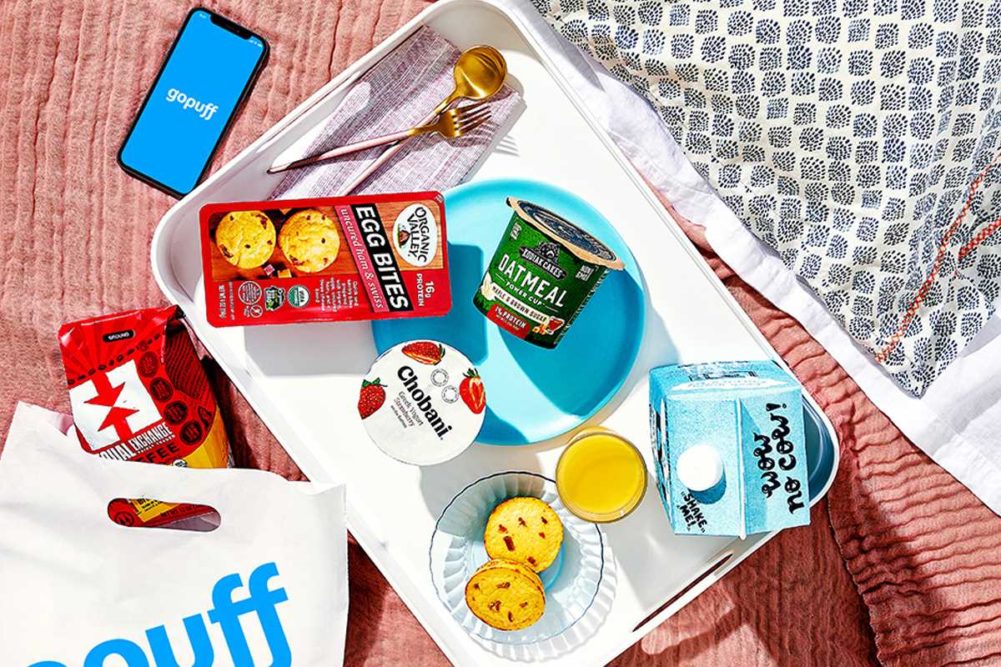CHICAGO — Inflation, ongoing supply chain challenges and other factors are likely to impact consumer purchasing and create headwinds for the snack category in the coming months.
“A big challenge for snack players is to add value to products so that consumers are willing to pay higher prices for them,” said Anne Scott Livingston, food and nutrition research analyst at Euromonitor, during a presentation at the Sweets & Snacks Expo, held May 23-26 in Chicago. “In the case of snacks, the value proposition involves not only the unit price but also the convenience, including packaging and delivery options.”
Opportunities exist for snack makers to add value by embracing digitization, she said. Expanding remote work remains a top priority for 70% of companies surveyed by Euromonitor.
“This increased time spent at home creates major challenges for snack players,” Ms. Livingston said. “While consumers who make impulse purchases have been declining, those who buy groceries online has kept on growing.”
Data from Euromonitor show nearly half (46%) of global consumers now shop for food online at least once a month.
“The growth of e-commerce is one of the most significant impacts of the pandemic,” Ms. Livingston said. “Many companies have launched their own direct-to-consumer websites, not only to have a new sales channel, but also to gain a better understanding of consumers and the possibility of testing new products.”
Marked by a desire among consumers for greater speed and convenience, delivery is playing a growing role in snack consumption. E-commerce historically has had low penetration in the distribution of snacks. Undeveloped cold chain infrastructures in many markets have restricted the speedy delivery of products like ice cream and yogurt in particular.
A new generation of third-party platforms is tackling those challenges, delivering snacks and other typical convenience store products to shoppers in 30 minutes or less. These ultrafast delivery services operate their own fulfillment centers, commonly referred to as dark stores.
“Dark stores are located close to the end consumer, enabling orders to be fulfilled and delivered within a matter of minutes,” Ms. Livingston said. “With their short delivery windows, these services allow urban consumers to utilize online ordering for impulse purchases.”
She pointed to GoPuff as a case study in ultrafast delivery. Launched in 2013, the Philadelphia-based company operates hyper-local fulfillment centers that are strategically located in more than 900 cities. Late last year it expanded into the United Kingdom, its first international market.
GoPuff’s dark stores are stocked with its own product inventory, eliminating the need for couriers to stop at brick-and-mortar retail locations to pick up items. This quick delivery has attracted the attention of investors. GoPuff was valued at $15 billion after raising $1 billion in funding last summer. The company has acquired several online retailers and delivery services, including app-only coffee and ice cream shop Bandit, alcohol chains BevMo and Liquor Barn and European instant delivery services Fancy and Dija.
The ultrafast delivery space still faces challenges, Ms. Livingston said. Many consumers are eager to return to pre-pandemic shopping behaviors, which typically means prioritizing shopping in brick-and-mortar retail locations rather than making purchases online.
“Additionally, with inflation hitting levels that haven’t been seen in years, consumers who are looking to mitigate these price increases may be more hesitant to pay a premium for ultrafast delivery than they would’ve been last year, especially because snack products can still be easily obtained in-store,” she said.
Live streaming is another tool snack makers can use to spark impulse purchases online. A 2022 survey from Euromonitor found a third of shoppers use live streaming to purchase products or services. E-commerce livestreaming has taken hold in China, where 67% of consumers use the channel to shop. Snacks rank among the top categories purchased through livestreams in the country.
E-commerce livestreaming is just beginning to emerge in North America and Europe, and major social media networks are paying attention. Facebook, Instagram, Pinterest and TikTok all have launched e-commerce livestreaming or online shopping features.
Nestle’s KitKat Chocolatory team in 2020 introduced Australia’s first Facebook-live shopping experience. The digital experience featured chocolate experts showcasing confectionery creations, product demos and limited time offers. Viewers were able to make purchases directly through the livestream.
“The main reasons why consumers use live streaming are that it enables them to obtain discounts from brands and it makes it easier to understand product features,” Ms. Livingston said.
Eight-in-ten consumers watch television or movies at least weekly, and half play video games at least once a week, according to Euromonitor. The market research company also found half of consumers eat snacks at home while just 18% reported eating snacks on-the-go in 2022. Forty-three percent said they eat snacks while watching TV or streaming video content, reaching 53% for the 15- to 29-year-old demographic.
“There are clearly opportunities here in these hometainment occasions for snacks,” Ms. Livingston said. “More snack brands need to develop products and promotions for these at-home occasions.”
Partnerships with PlayStation offer one example. Brands including Nestle’s KitKat and PepsiCo’s Doritos have partnered with the video game brand, giving players a chance to win a free gaming console when they purchase a snack.
Another example is ICNOW (Ice Cream Now) from Unilever. The platform is dedicated to finding opportunities for ice cream in the instant delivery space. Last year it debuted a campaign in Spain that allowed gamers watching a live tournament through the video platform Twitch to order Magnum pints in-stream. The company partnered with a local on-demand delivery service to drop off orders within 10 minutes.





